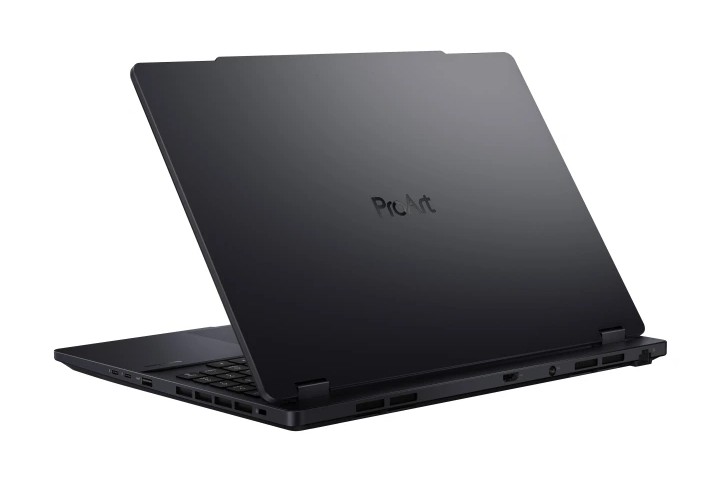Check out our complete coverage of CES 2023 live from Las Vegas
Made for professionals and creators alike, the 2023 Asus ProArt Studiobook 16 OLED now comes with 3D immersion and tracking tech, not to mention hardware that is bound to make potential customers salivate.
Fresh out of CES 2023, the ProArt Studiobook 16 3D OLED (H7604 3D OLED) is part of the latest generation of professional laptops from Asus targeted at creators, especially in the audio/visual or design industries.

Gone is the 11th-gen Intel and in comes the 12th-gen Core HX-series of CPUs, supported by up to 64GB of DDR5 RAM (4,800MHz, upgradeable SO-DIMMs), and two upgradeable M2 slots for 8TB maximum storage. Adopting Intel HX processors doubles the available cores (16 versus 8) and increases thread count to 24 over the previous gen, allowing pros to create, program, render, and work with maximum efficiency in the office, at home, or on the go.
Related
-
The ROG Flow X13 redesign makes it even thinner, even more powerful
-
MSI might have the best 14-inch gaming laptop this year
-
CES 2023: HP’s Dragonfly Pro Chromebook has world’s first 8-megapixel laptop webcam
In terms of graphics, the specs sheet refers to the “next-gen Nvidia GeForce RTX laptop GPU.” We’re quite sure Asus is referring to some kind of RTX A6000 laptop workstation card, based off the consumer laptop RTX 3090. For what it’s worth, between the CPU and RTX card, Asus claims a combined 150 watts of performance, with cooling managed by heat pipes and dual aerofoil blade fans, venting heat out of quad exhausts around the chassis.
Probably the pièce de résistance of this year’s Studiobook would be the display. It’s a 16-inch narrow-bezeled 3.2K (3200 x 2000) 120Hz OLED panel with 100% DCI-P3 certification and 0.2ms response time (gaming anyone?), and this time with 3D and eye-tracking capabilities.
As of this writing, not much information has been revealed about the 3D aspects of the laptop and, of course, trying it out in person will be the real test. But since this device is meant for, among others, CAD and 3D designers, it’s likely that designers can view their 3D creations more immersively either with compatible glasses or directly with eye-tracking.
Here’s what Asus had to say about the feature in its official press release: “Creating 3D visual content is made faster and more intuitive, and ASUS Spatial Vision technology allows 2D visual content to be seamlessly converted to immersive 3D in real time with the flick of a switch.”
Asus is bringing this same 3D screen to the cheaper Vivobook Pro 16 3D OLED and is also offering a non-3D version of both of these laptops.
Making a return as well is the Asus Dial, which is a physical rotary wheel located just above the top-left side of the world’s first haptic trackpad. The customizable dial is meant to increase creative workflow in compatible apps, such as Adobe Photoshop, Premiere Pro, and so on.
Officially, Asus hasn’t provided pricing for the laptop and has only said that it will be available sometime in the second quarter of 2023. If Asus follows the lead of the previous-generation Studiobook, the 2023 version will be available in August.

Today’s tech news, curated and condensed for your inbox
Subscribe
Check your inbox!
Please provide a valid email address to continue.
This email address is currently on file. If you are not receiving newsletters, please check your spam folder.
Sorry, an error occurred during subscription. Please try again later.
Privacy Policy
Use a different email

